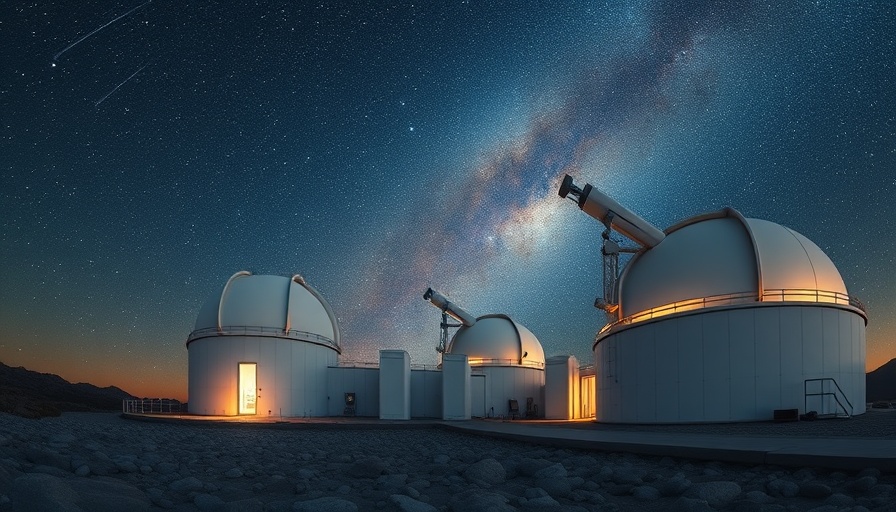
Exploring the Universe Through Innovative Data Collection
Imagine looking up at a clear night sky, surrounded by a tapestry of stars, each representing an unsolved mystery of the universe. The Vera C. Rubin Observatory taps into this cosmic wonder, offering unprecedented chances to learn the complexities of space. But beyond just being a source of fascination, the data gathered from these astronomical investigations can significantly enhance our understanding of both the universe and our planet.
The Ambitious Vision of the Vera C. Rubin Observatory
Founded on a dream of revolutionizing how we study the cosmos, the Vera C. Rubin Observatory is set to execute a decade-long optical survey through its advanced Legacy Survey of Space and Time (LSST). The optical capabilities of the observatory will allow it to capture over 500 petabytes of data—equivalent to five million gigabytes—over its operational lifespan. This project, which originated from the need to broaden our astronomical knowledge, showcases how technology and scientific vision intersect.
Meet the Innovators Behind the Data Collection
Stephen Pietrowicz, a principal research software engineer at the National Center for Supercomputing Applications (NCSA), is one of the many dedicated individuals pushing this mission forward. Pietrowicz oversees the Observatory Operations Data Service (OODS), ensuring that the colossal influx of images from the Simonyi Survey Telescope is managed and made accessible to scientists swiftly. “My software quickly ingests those images, so they can immediately be used by scientists,” he explains. This kind of efficiency is critical, as the data will serve as a foundation for future astronomical discoveries.
The Challenge of Big Data in Astronomy
With such an enormous volume of data expected from the observatory, substantial challenges lie ahead. Data management, processing, and analysis are core components of the endeavor. The collaboration between software engineers, astronomers, and data scientists is pivotal to navigate the complexities of this vast dataset. Teams will need to devise innovative algorithms and methodologies to sift through, analyze, and draw insights from the information gathered.
The Cosmic Connection: Inspiring Future Generations
While the technical aspects of the project are undeniably important, the inspiration and wonder that arise from studying the universe are what truly engage the public. Programs that communicate the significance of these efforts are essential for fostering interest in STEM fields among young people. As they learn about space and data science, future generations could be motivated to become the next innovators in these realms.
Conclusion: The Broader Impact of What We Learn
The work being done at the Vera C. Rubin Observatory stands at the forefront of scientific advancement. By harvesting the data stored among the stars, researchers are paving the way for groundbreaking discoveries that have the potential to reshape our understanding of the universe and our place within it. Such initiatives not only advance science but also instill awe and curiosity that can last a lifetime.
 Add Row
Add Row  Add
Add 




Write A Comment